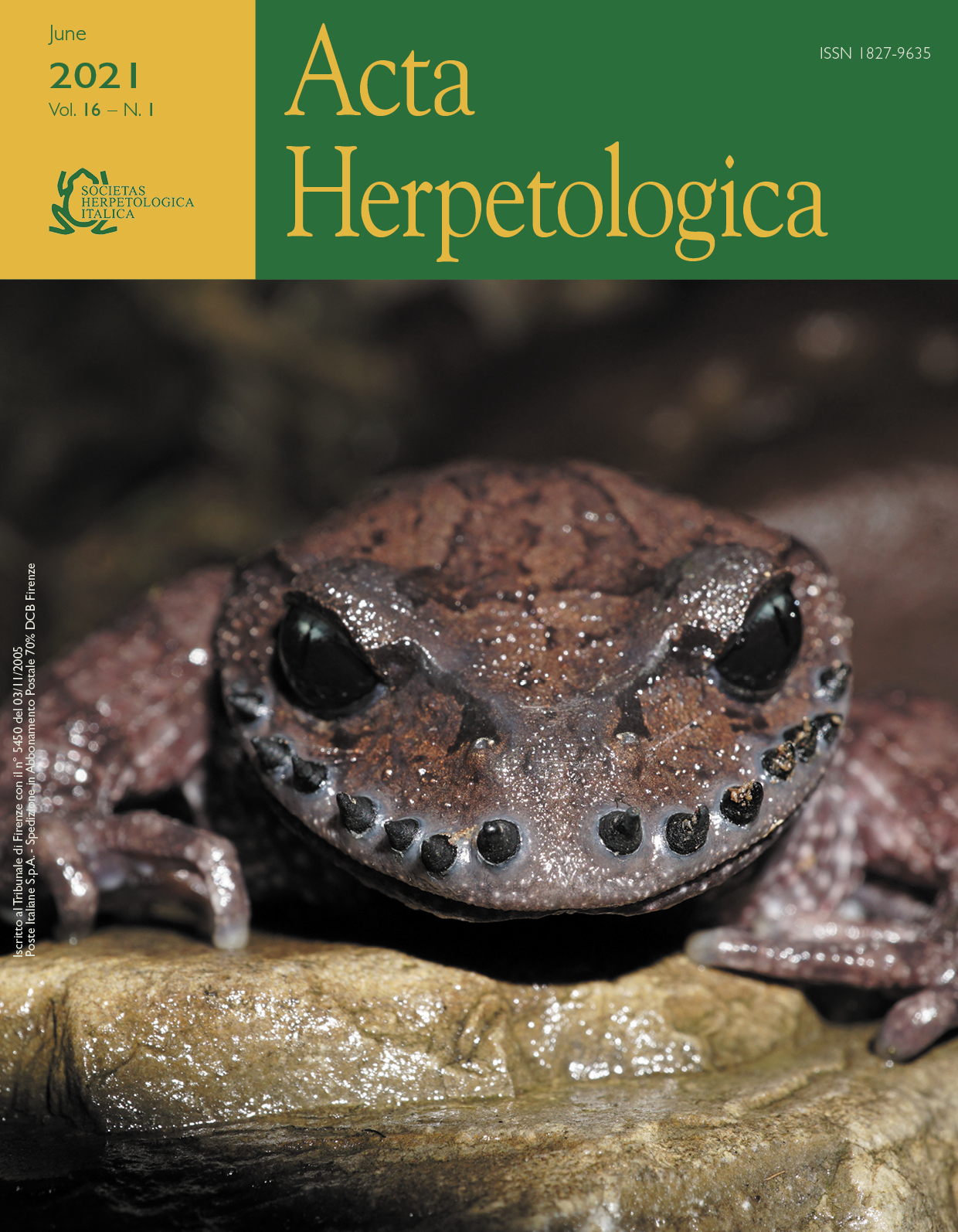Rana temporaria on Monti della Laga (Central Italy): isolated population or wide distribution? First record in Abruzzo and Marche
Published 2021-05-05
Keywords
- Rana temporaria,
- relict species,
- species distribution model,
- MaxEnt,
- Central Italy
How to Cite
Abstract
In Central Italy Rana temporaria is only known to occur as a glacial relict on the eastern side of Monti della Laga (Lazio). In this study we report the presence of the species in other areas of the mountain chain, with documented sightings in five distinct localities in Marche and Abruzzo. We use these new records, together with other occurrence data from the Apennine chain, to generate a species distribution model and perform an analysis of the geological preference of the species in Central Italy. Although the model indicates a wide area of Marche and Abruzzo as suitable for R. temporaria, the actual distribution of the species in northern and central Apennine appears strongly associated with sandstones. Therefore, we argue that the presence of this geological substrate on Monti della Laga, but not in surrounding karst uplands, could be among the factors explaining its isolation. Our study aims at paving the way for future surveys and measures to protect these isolated populations from the threat posed by climate change.






